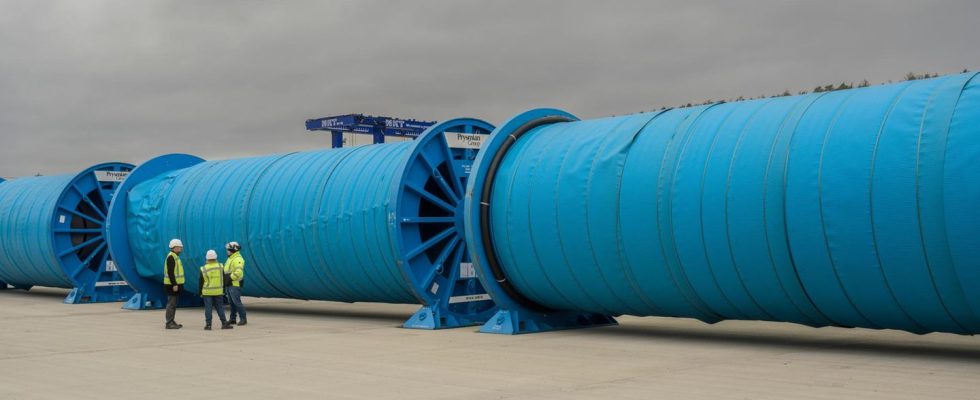The population wants more climate protection. Politicians are celebrating falling CO₂ emissions. But the energy transition is stalling. Why is that?
Fat fog has been clinging to the Hornisgrinde mountain for days and is covering the wind turbine on the summit. Only when Matthias Griebl rolls the SUV onto the gravel forecourt of the facility does the silhouette appear. He would have liked to present the wind turbine in the sunshine; it symbolizes his life’s work: the energy transition. “This is where my father, my brother and I built the first wind farm in Baden-Württemberg in 1994,” he says.
Griebl gets out carefully, his wife hands him crutches. Two and a half years ago he fell on his e-bike. The doctors diagnosed a broken cervical vertebra and paraplegia. So wheelchair. “Not with me,” Griebl said to himself. Since then he has been fighting his way back to the vertical. With unbridled will and a bit of wonder, it always works better. “I never give up,” says the 47-year-old, who has been hard of hearing since birth.
Will and wonder: He also needs that for his job. As a project developer, he works with neighboring communities to free the northern Black Forest of CO2. Twelve more wind turbines are to be built. But things aren’t moving forward. Griebl has been waiting for approval for the second wind turbine for seven years. “I fight against windmills,” he says, smiling bitterly.
“Our medium-sized companies in particular need green electricity”
Resistance everywhere. Listless bureaucrats who don’t process files. Defiant conservationists who want to give up wind turbines for a few partridges. Populists who trash the energy transition with untruths. Griebl points to gray, lifeless spruce trees. “Spooks claim it wasn’t the bark beetle that killed them, but our wind turbine.” The chaotic federal government makes it easy for opponents. “The frustration with the traffic lights is taken out on the wind turbines.”

Sonja Schuchter is standing next to him. The Christian Democrat is the mayor of nearby Sasbachwalden, where the romance is like in a local film. She also wants wind power and supports Griebl politically as much as she can. She says: “Since the start of the war in Ukraine and the energy crisis, no one can really understand why things aren’t moving forward!” The new wind turbines could supply 200,000 to 300,000 residents. “Our medium-sized companies in particular need green electricity in order to remain competitive and maintain jobs here.”
Expansion of wind power is not making progress
The shortfall in wind power is particularly painful because it is systemically important. Unlike the sun, wind can typically provide electricity 24 hours a day. Bärbel Heidebroek, President of the Federal Wind Energy Association, says that six to seven more wind turbines need to be connected to the grid every day so that the German electricity mix becomes at least 80 percent CO2-free by 2030, as planned. There are currently two. Bavaria has announced 1,000 new wind turbines by the end of the decade, but only 17 were approved last year. Even Baden-Württemberg, which is governed by the Green Party, cannot boast more than 16 newly installed wind turbines. North Rhine-Westphalia reported 112 commissionings – according to the coalition agreement there should have been 200.
Everyone knows those stressful dreams in which you have to achieve a goal but just can’t do it. In which new, bizarre obstacles always appear. It’s not just Griebl and Schuchter who are going through something like this. The whole of Germany is going through something like this.

